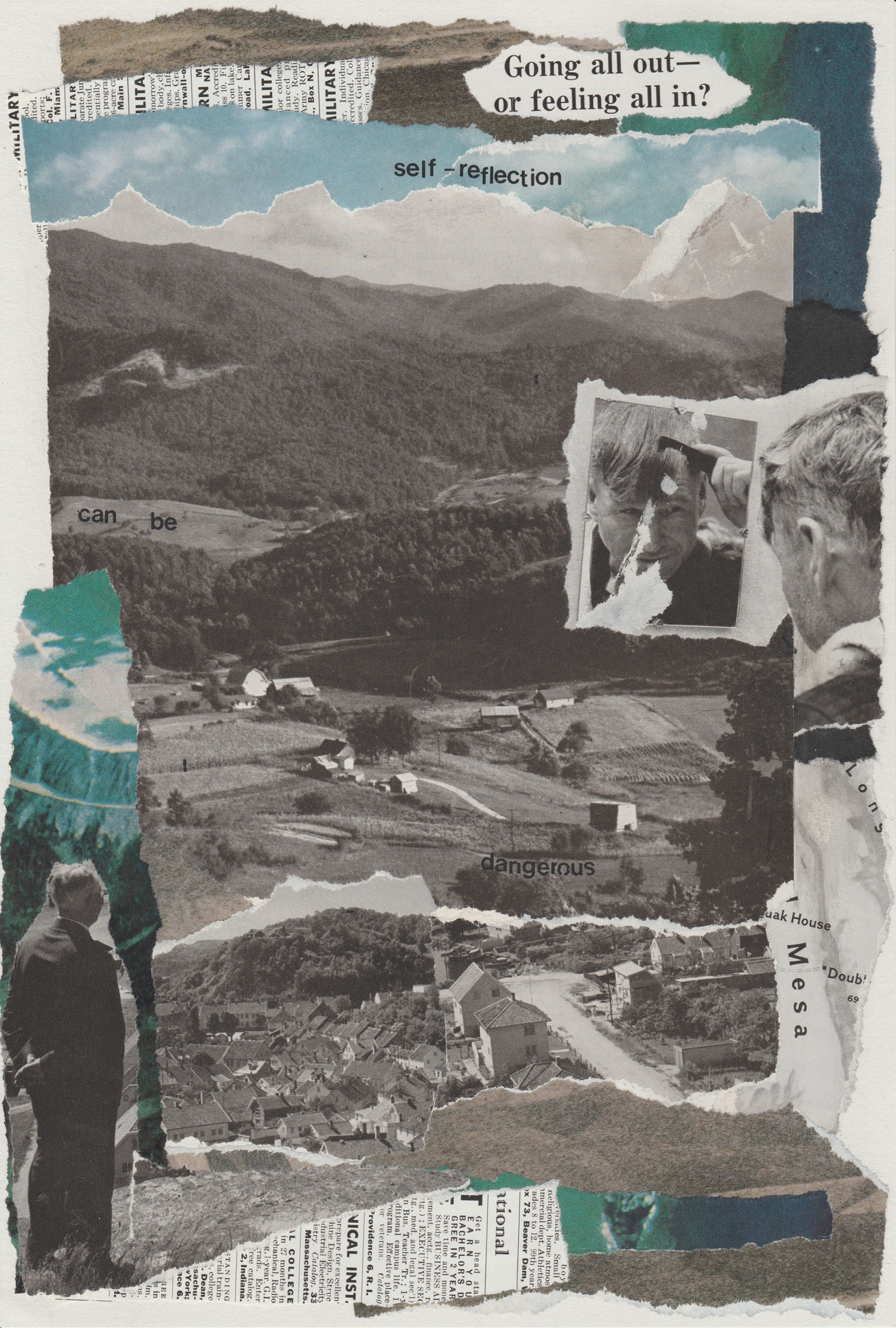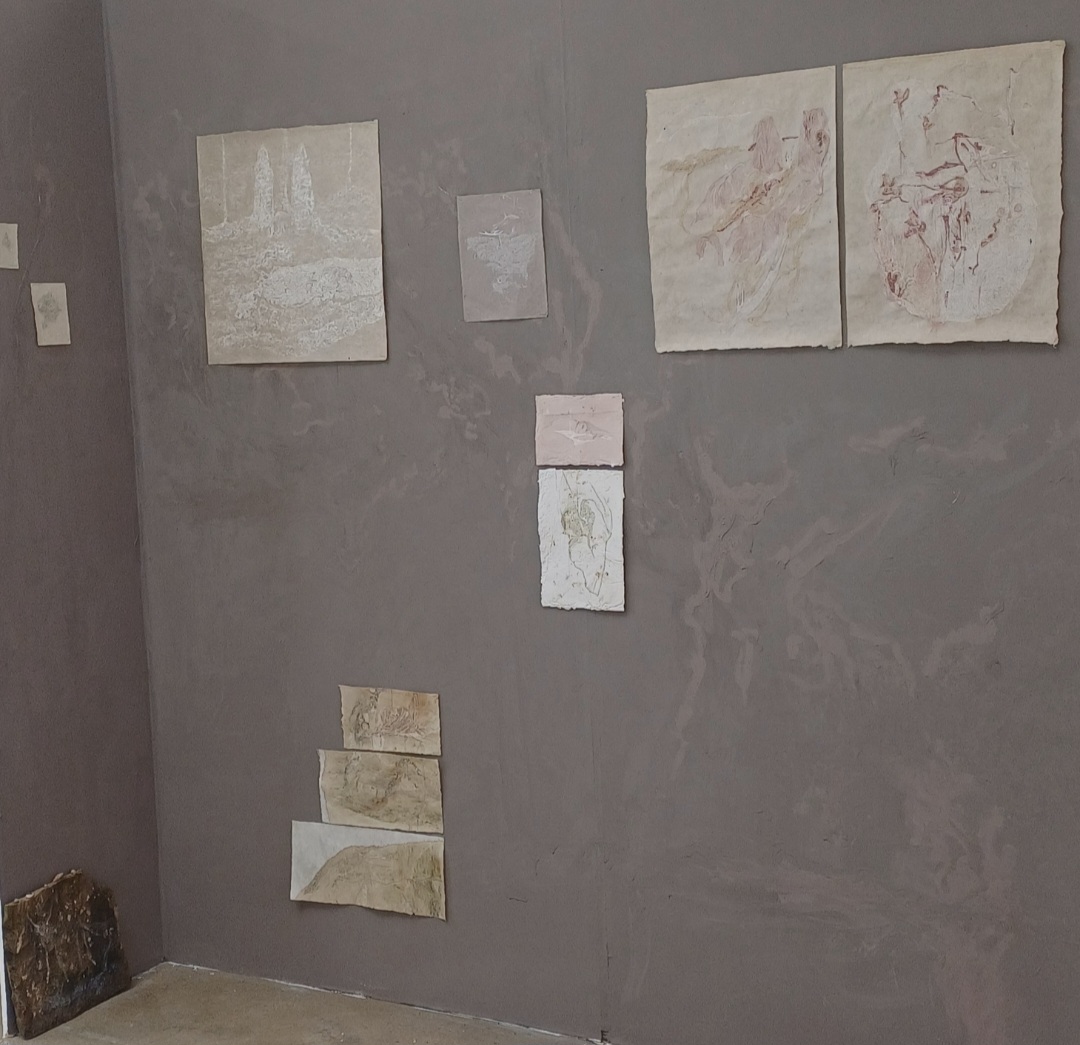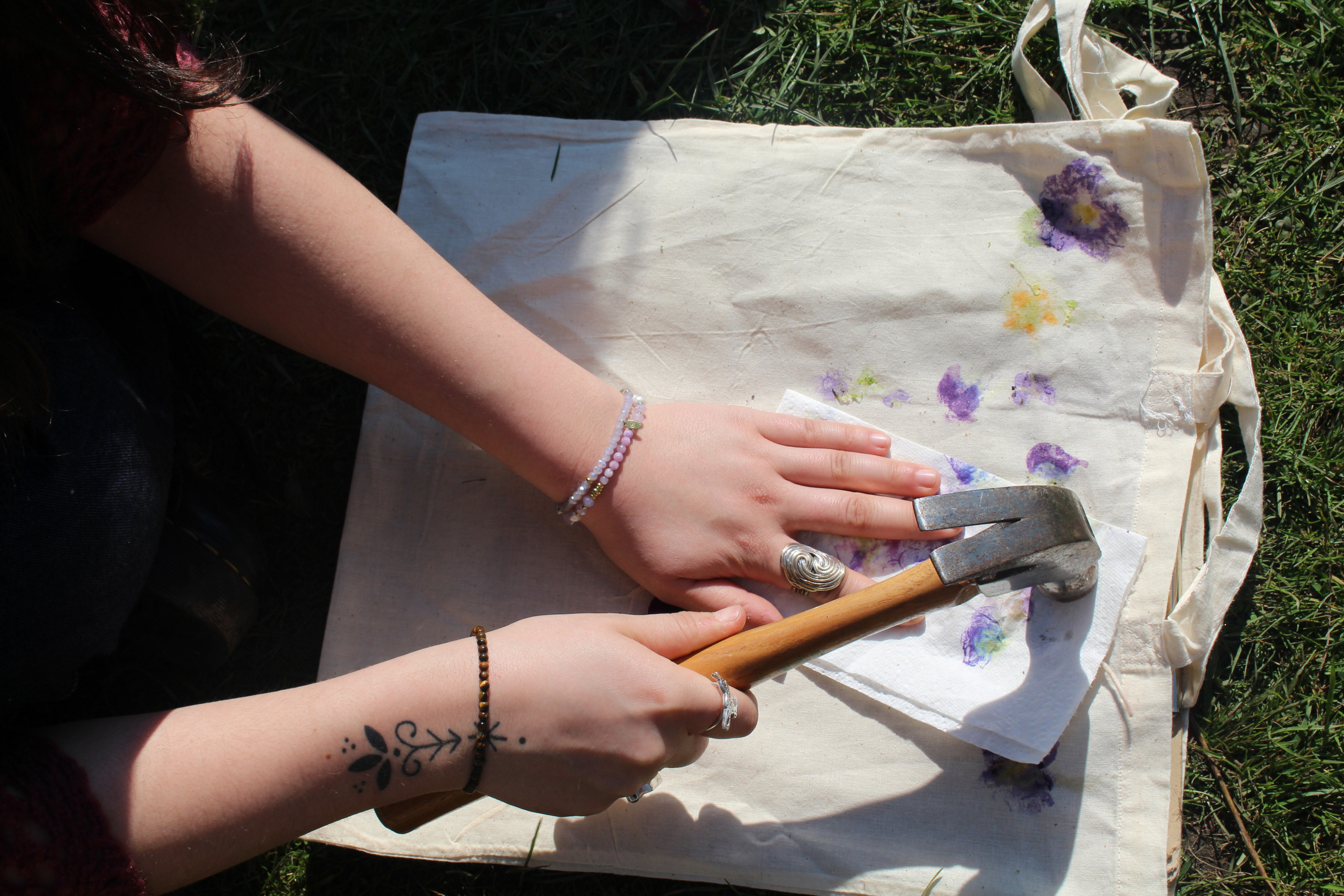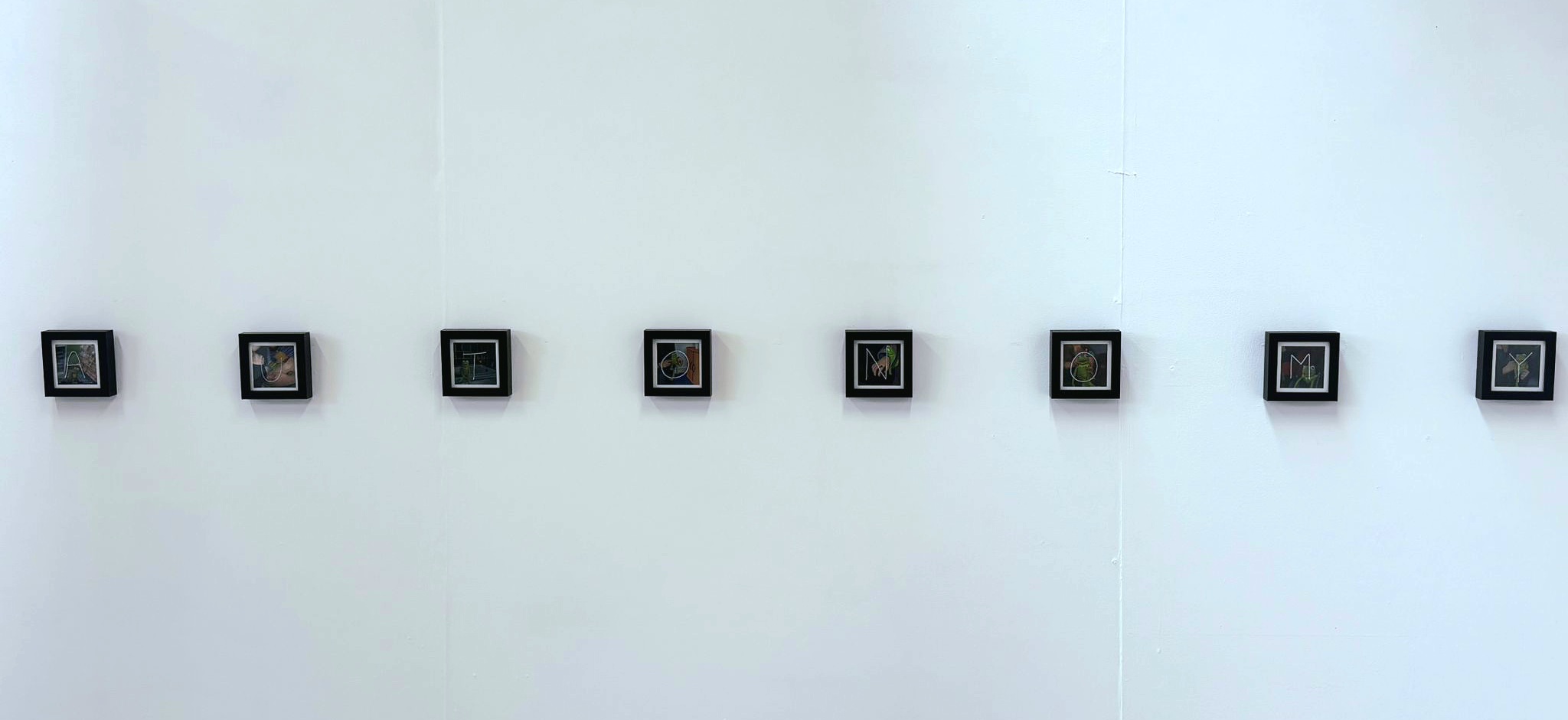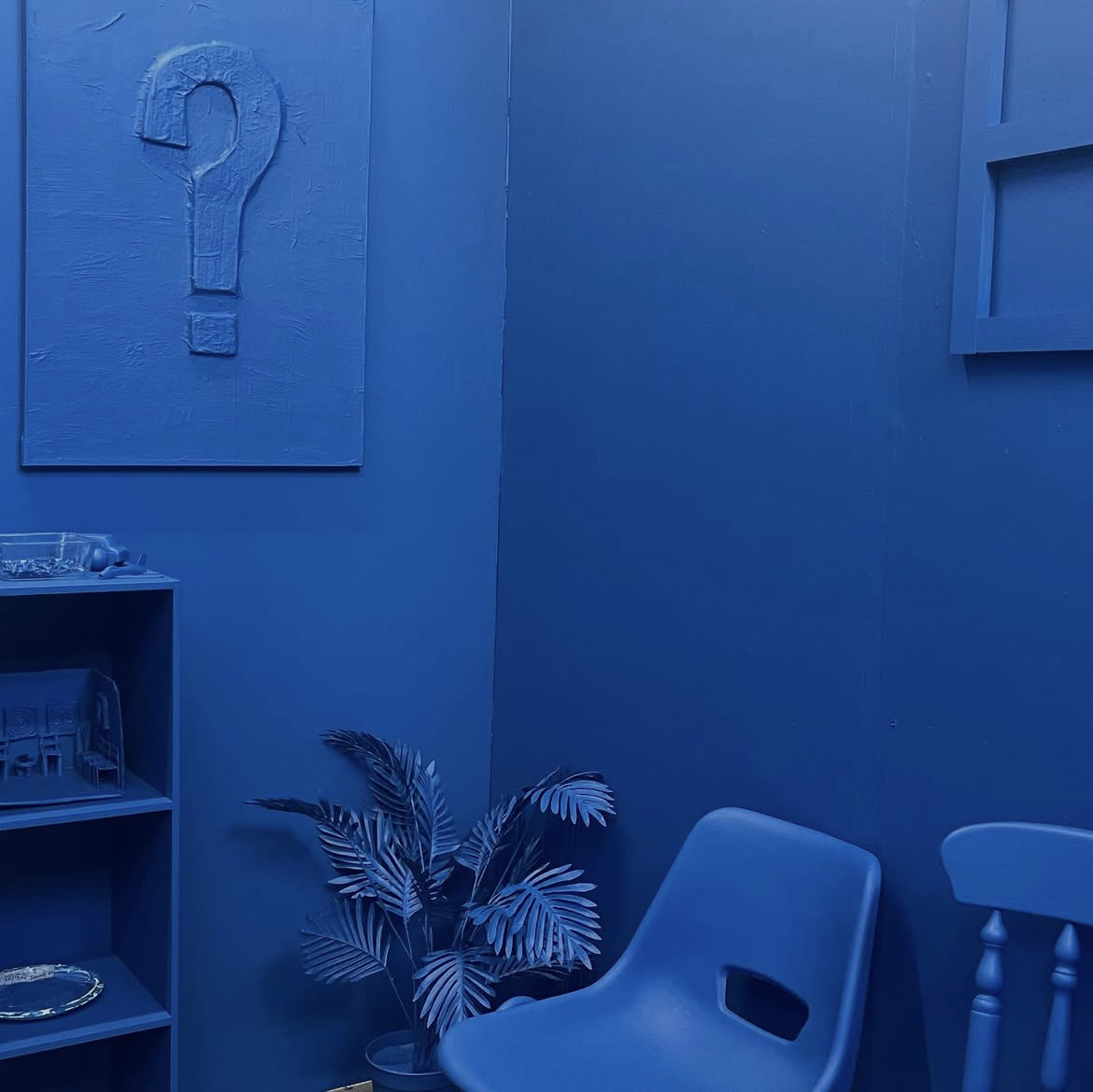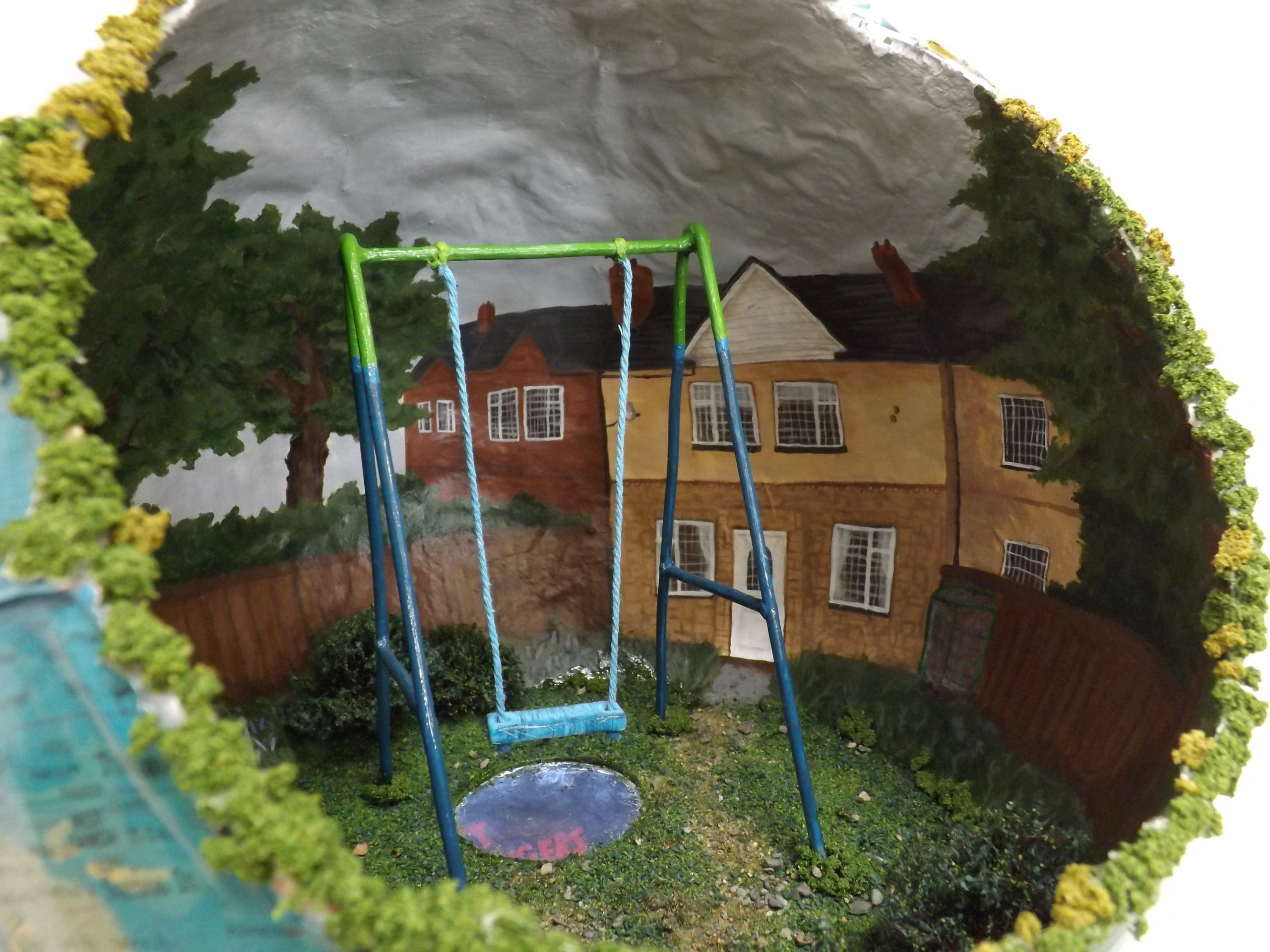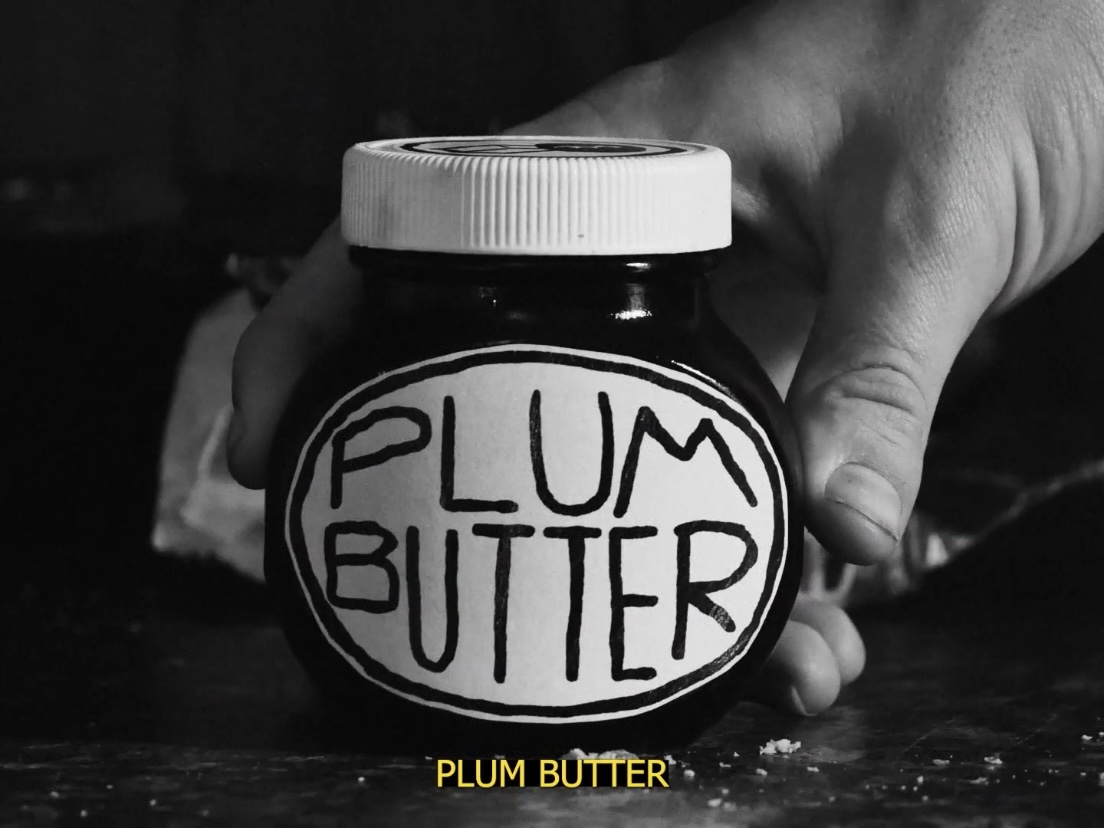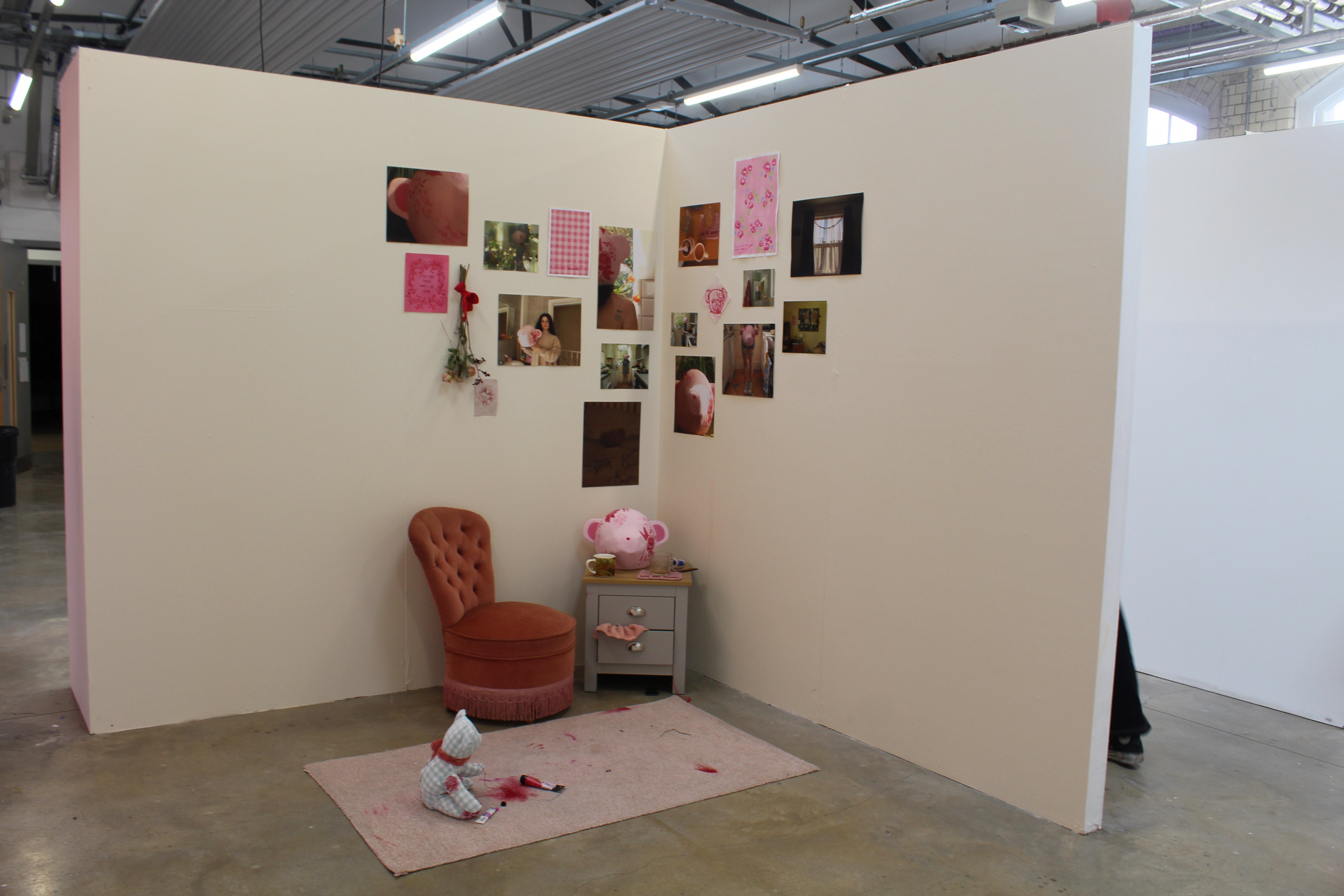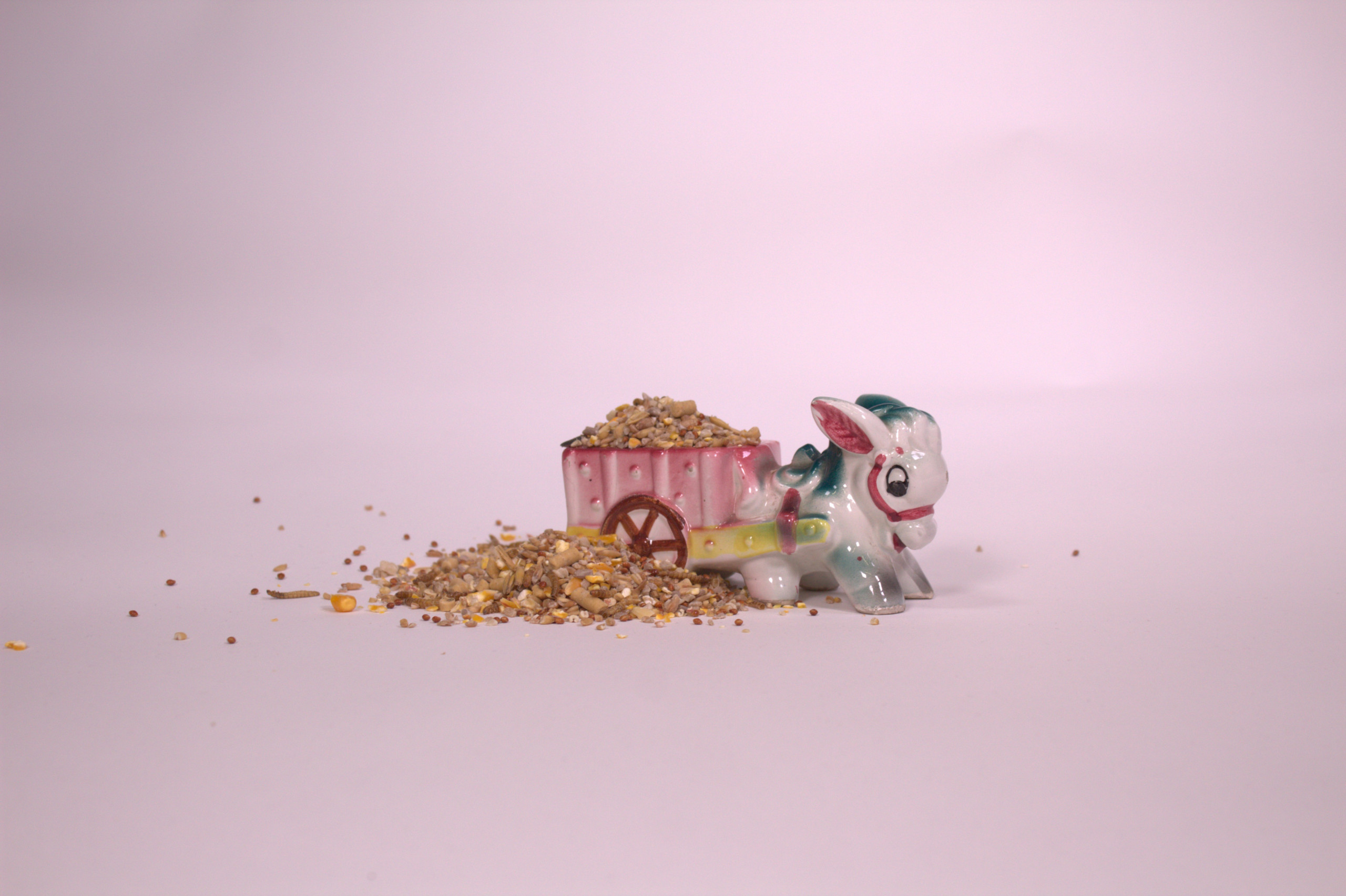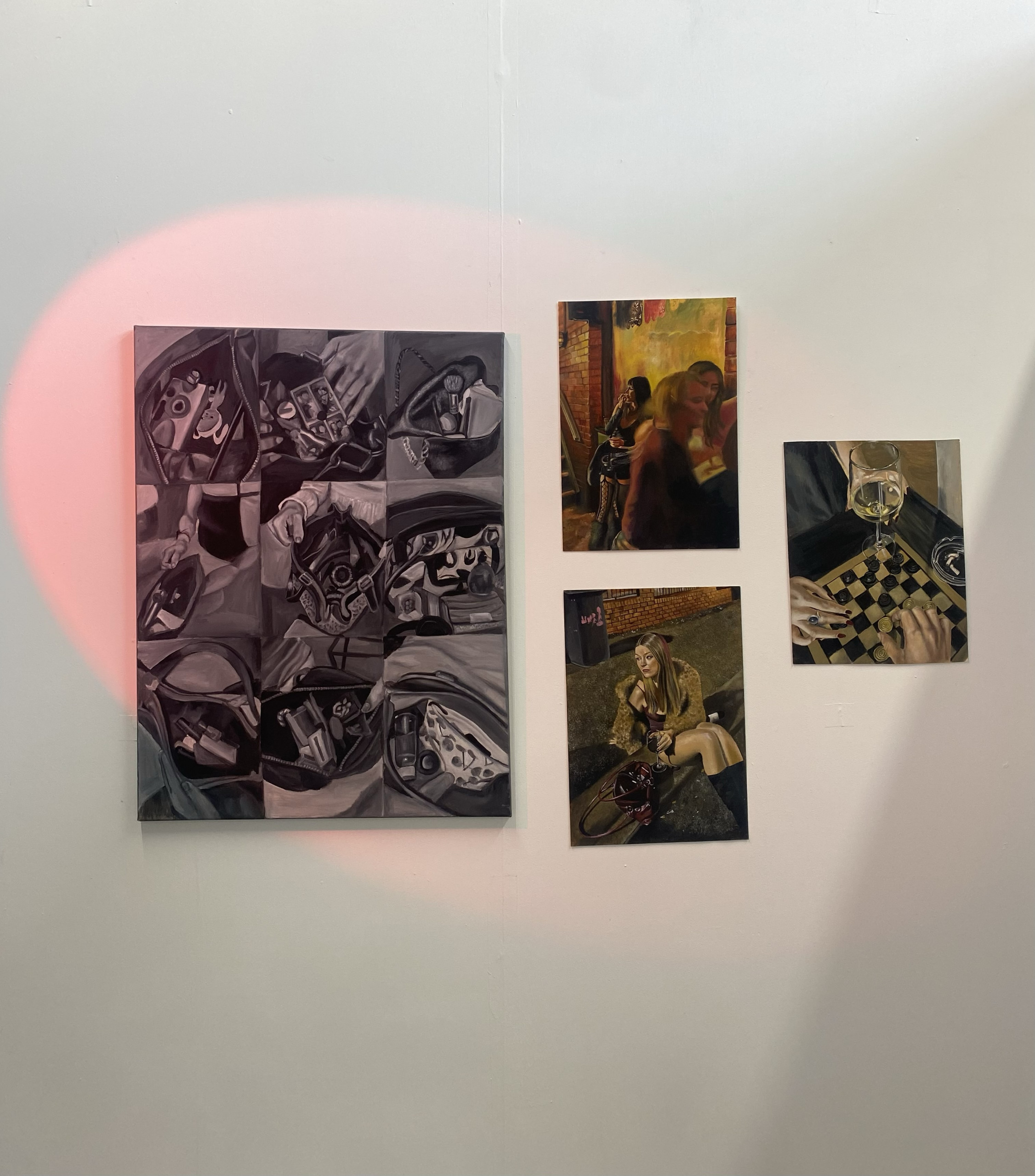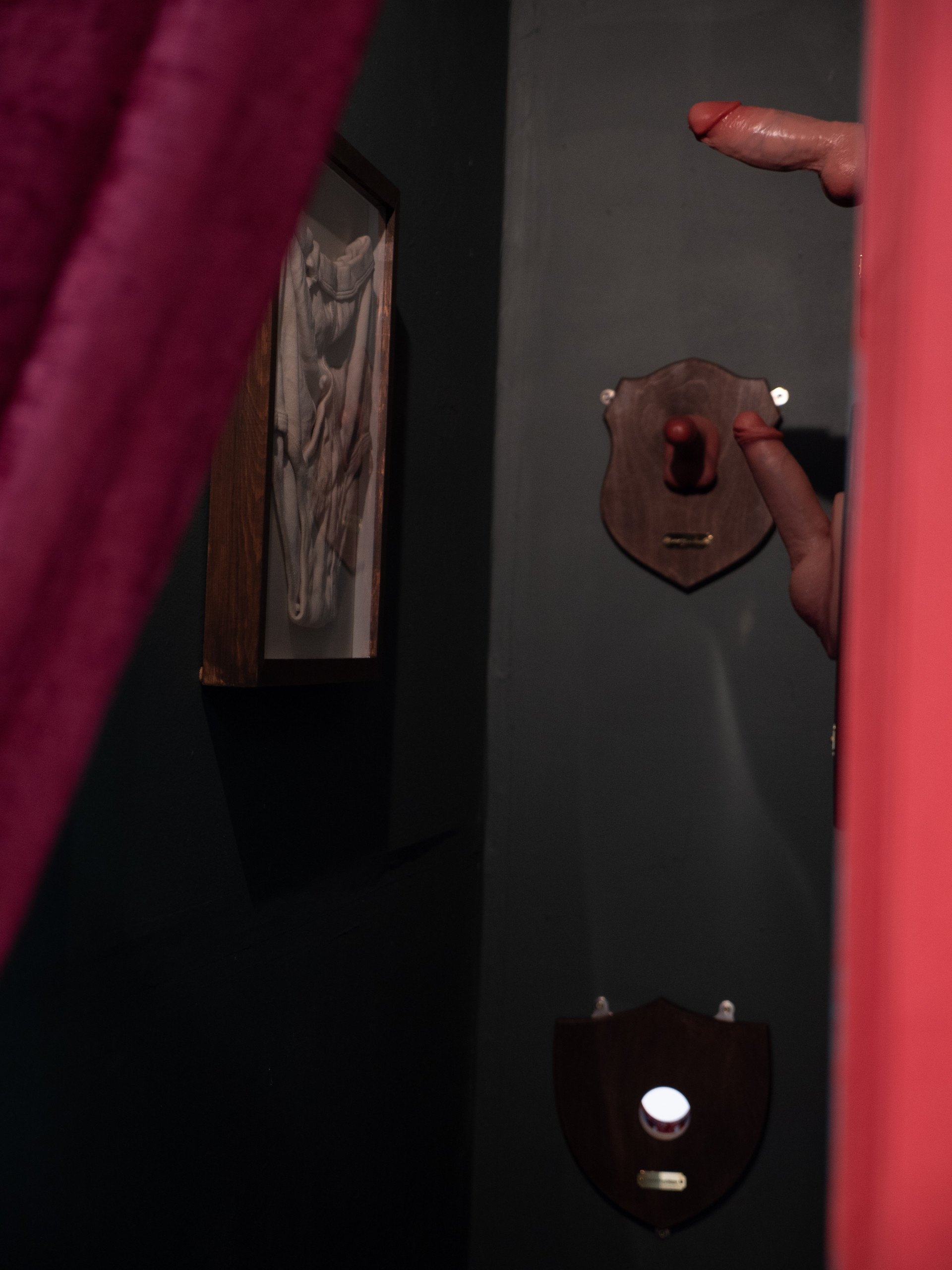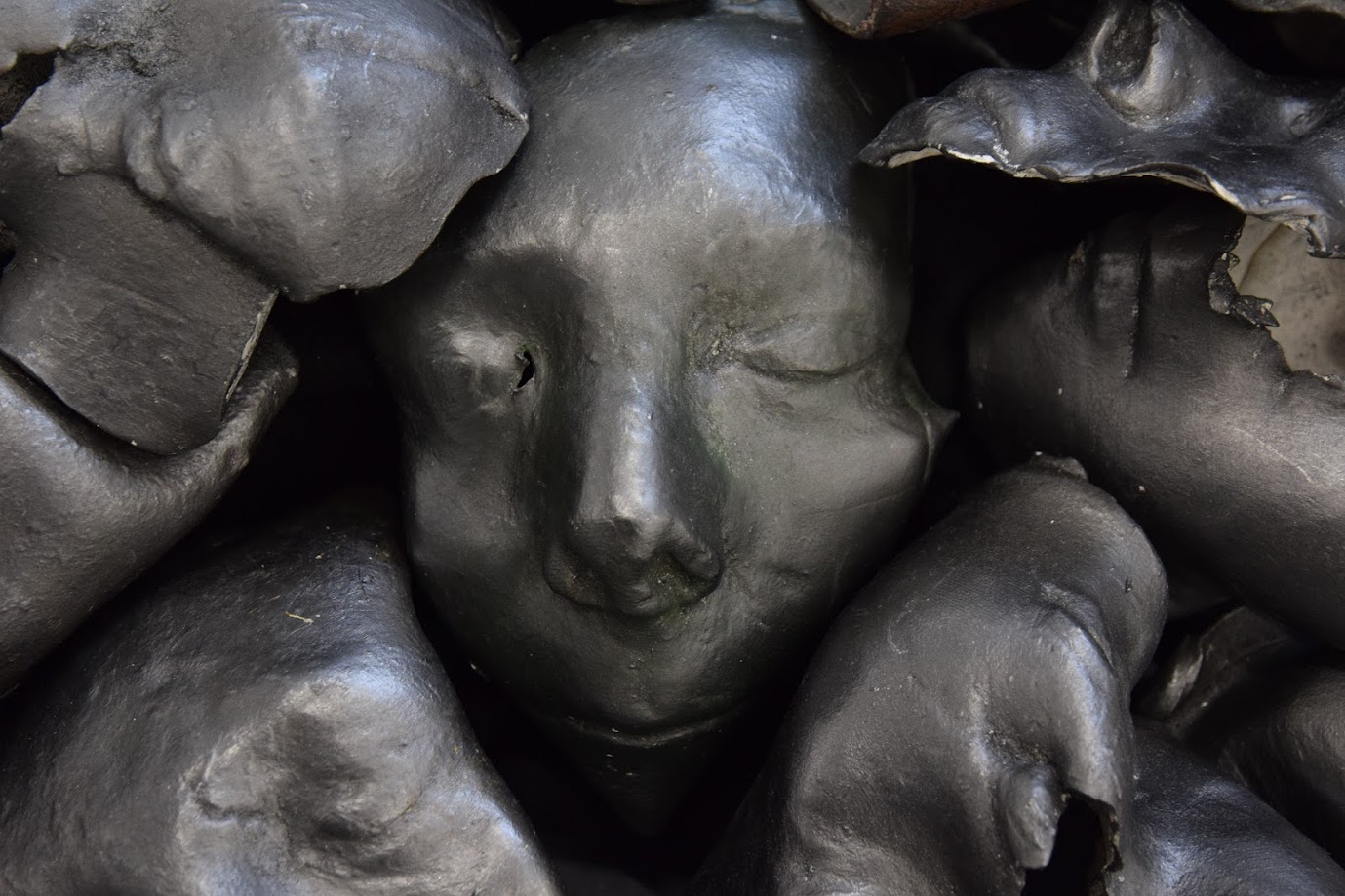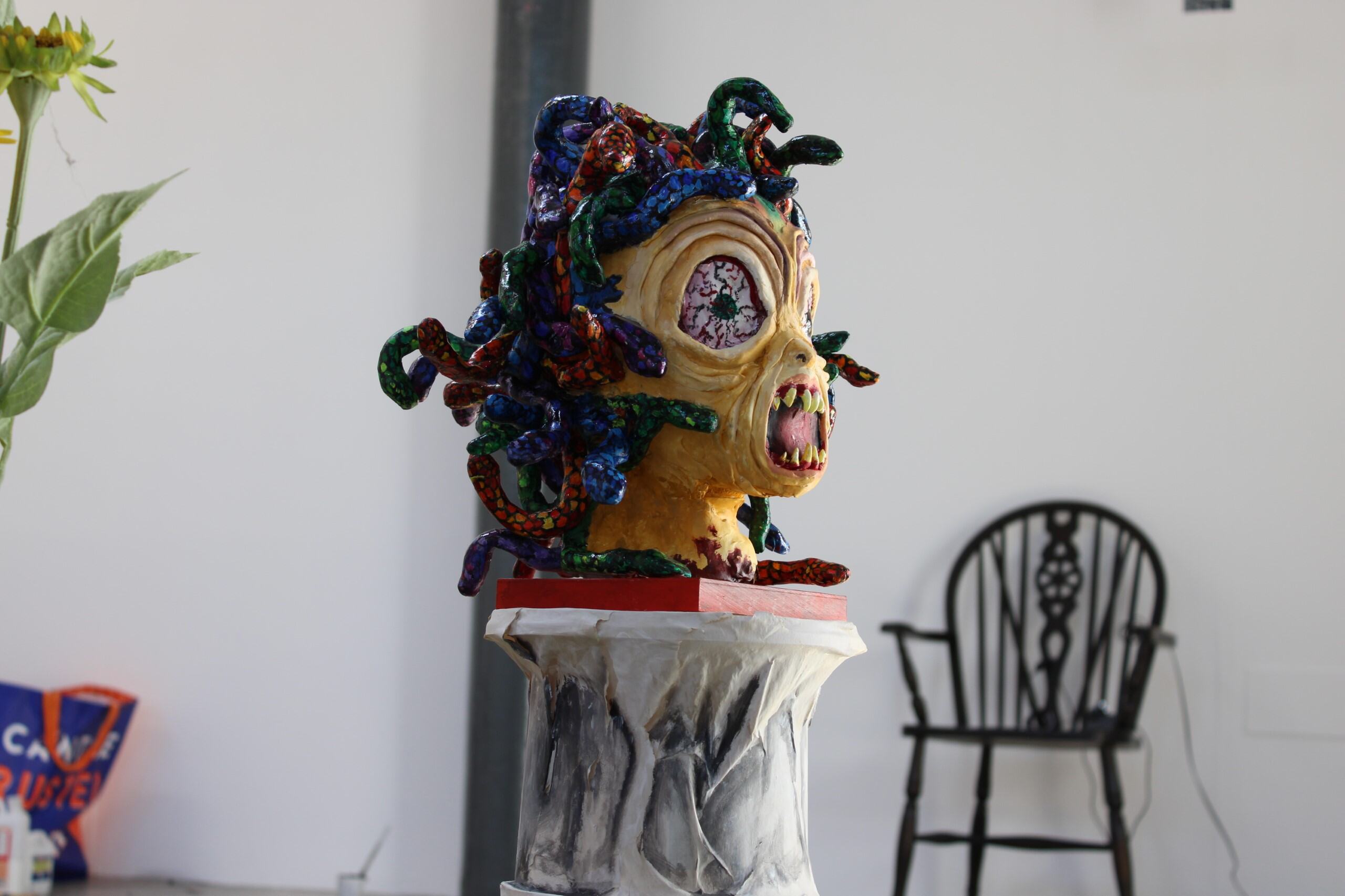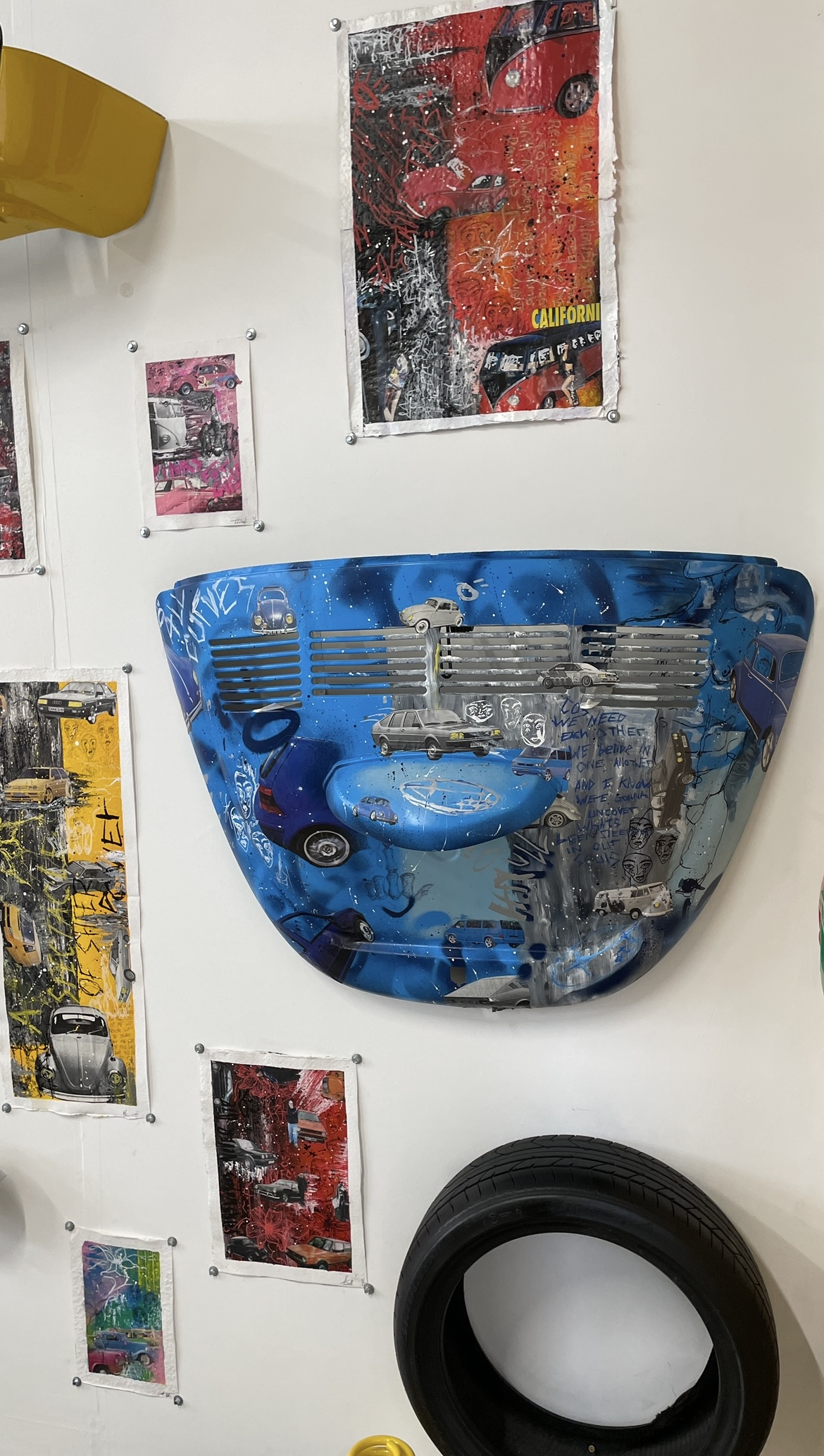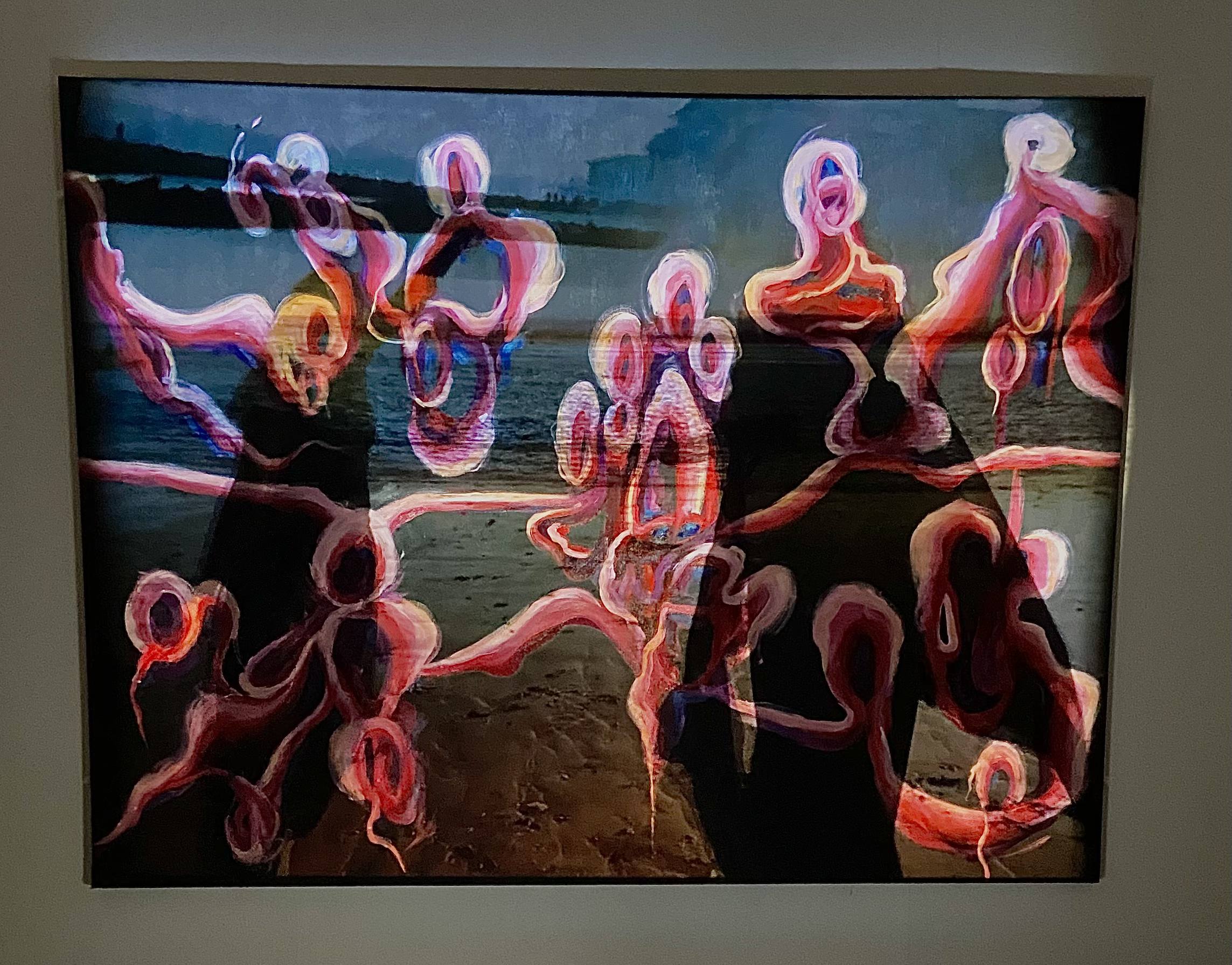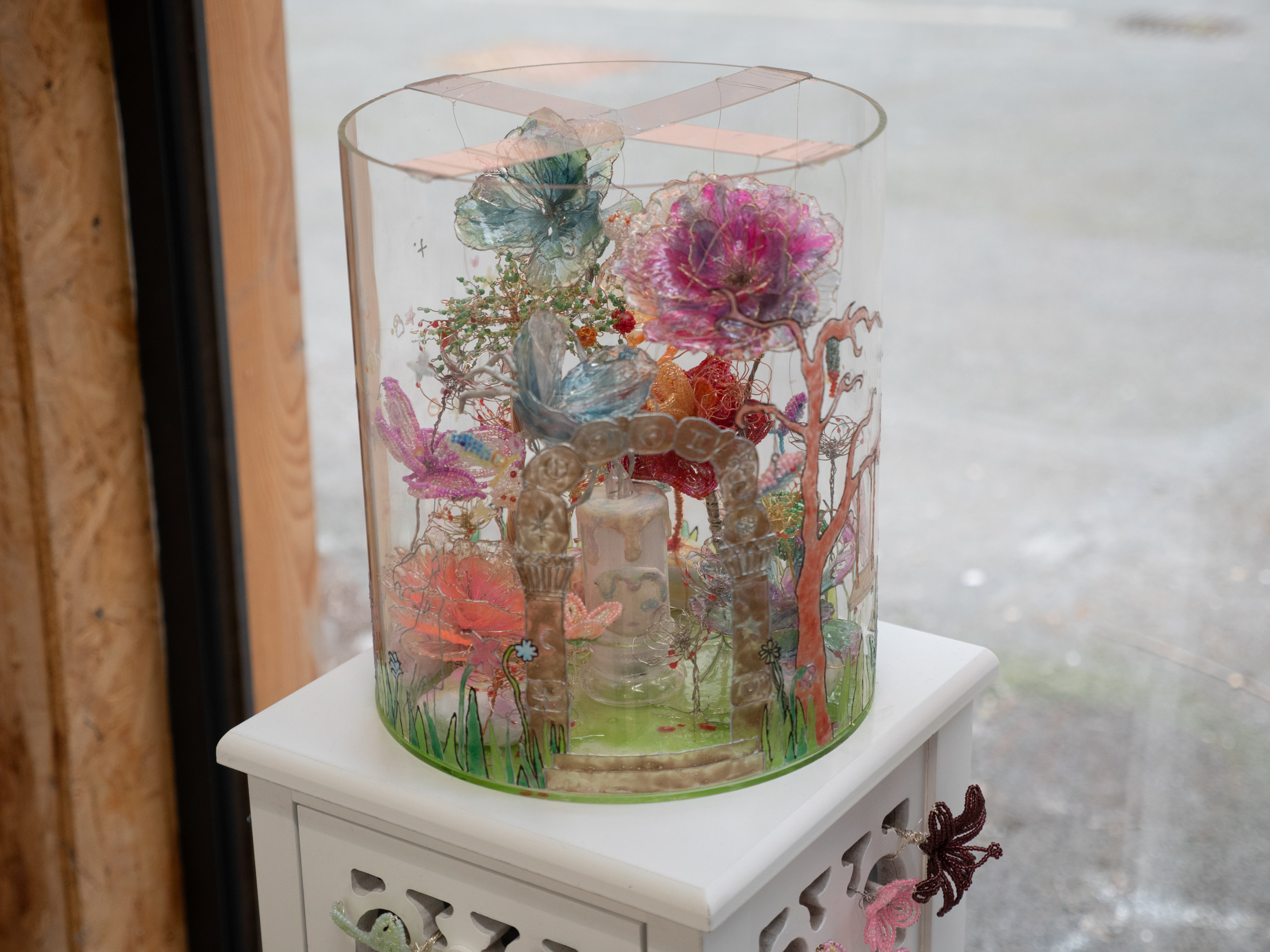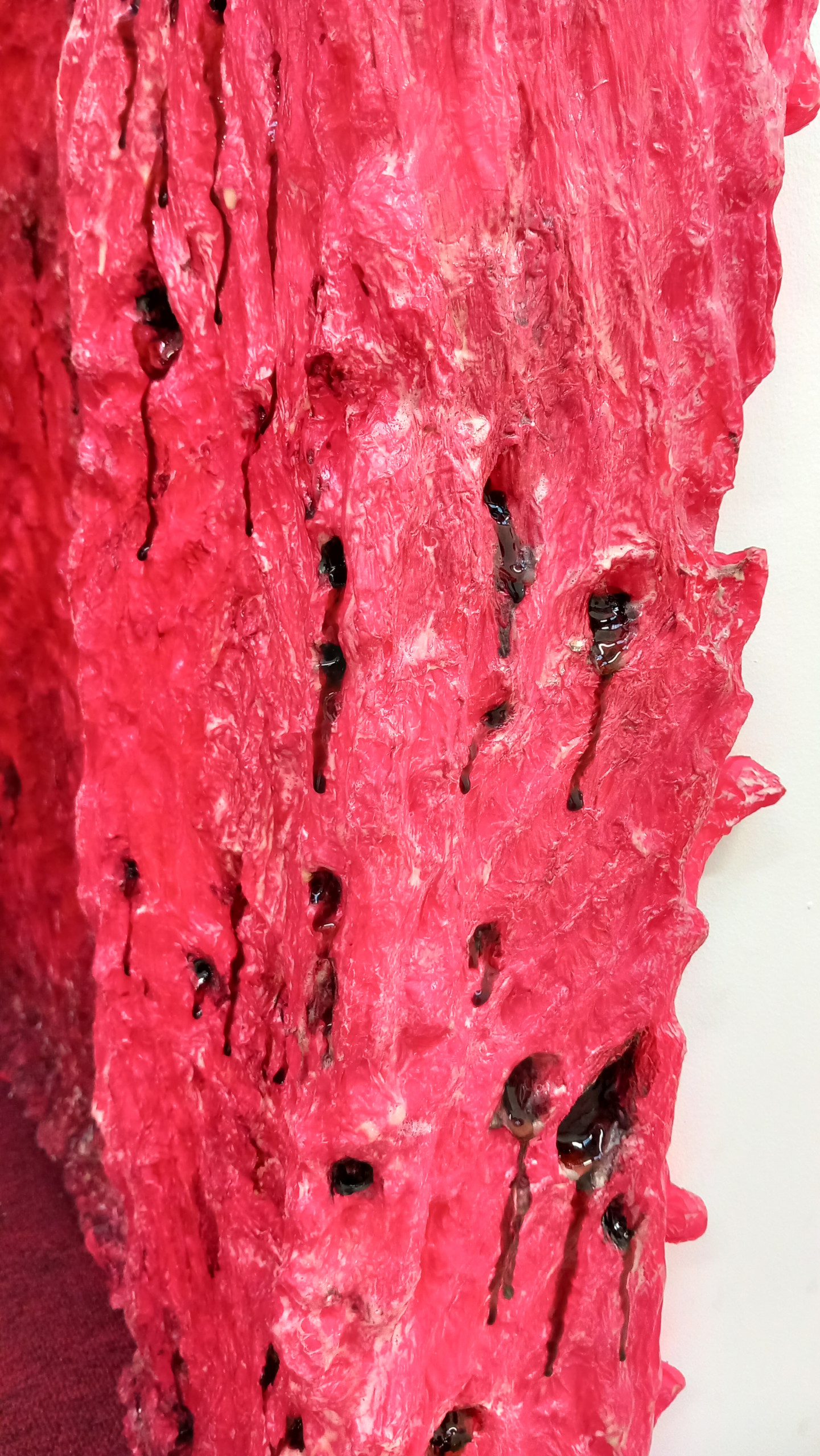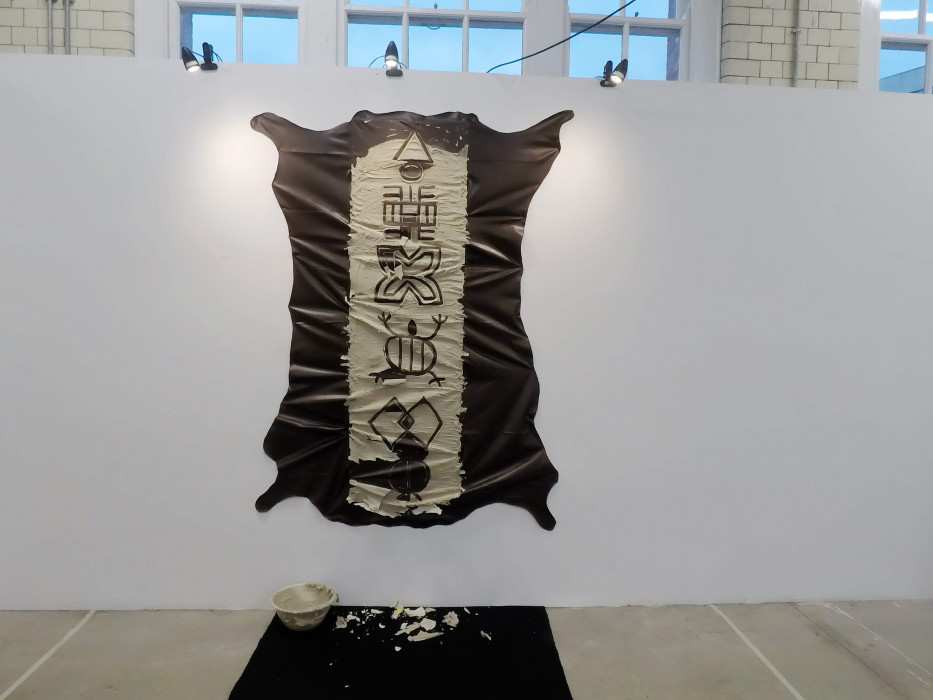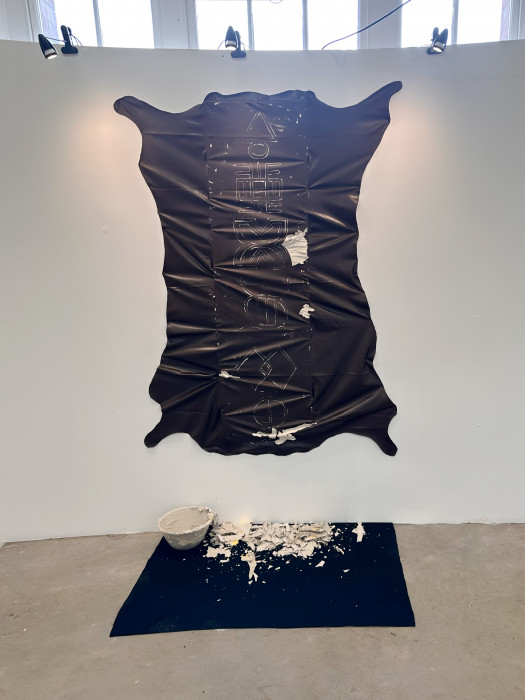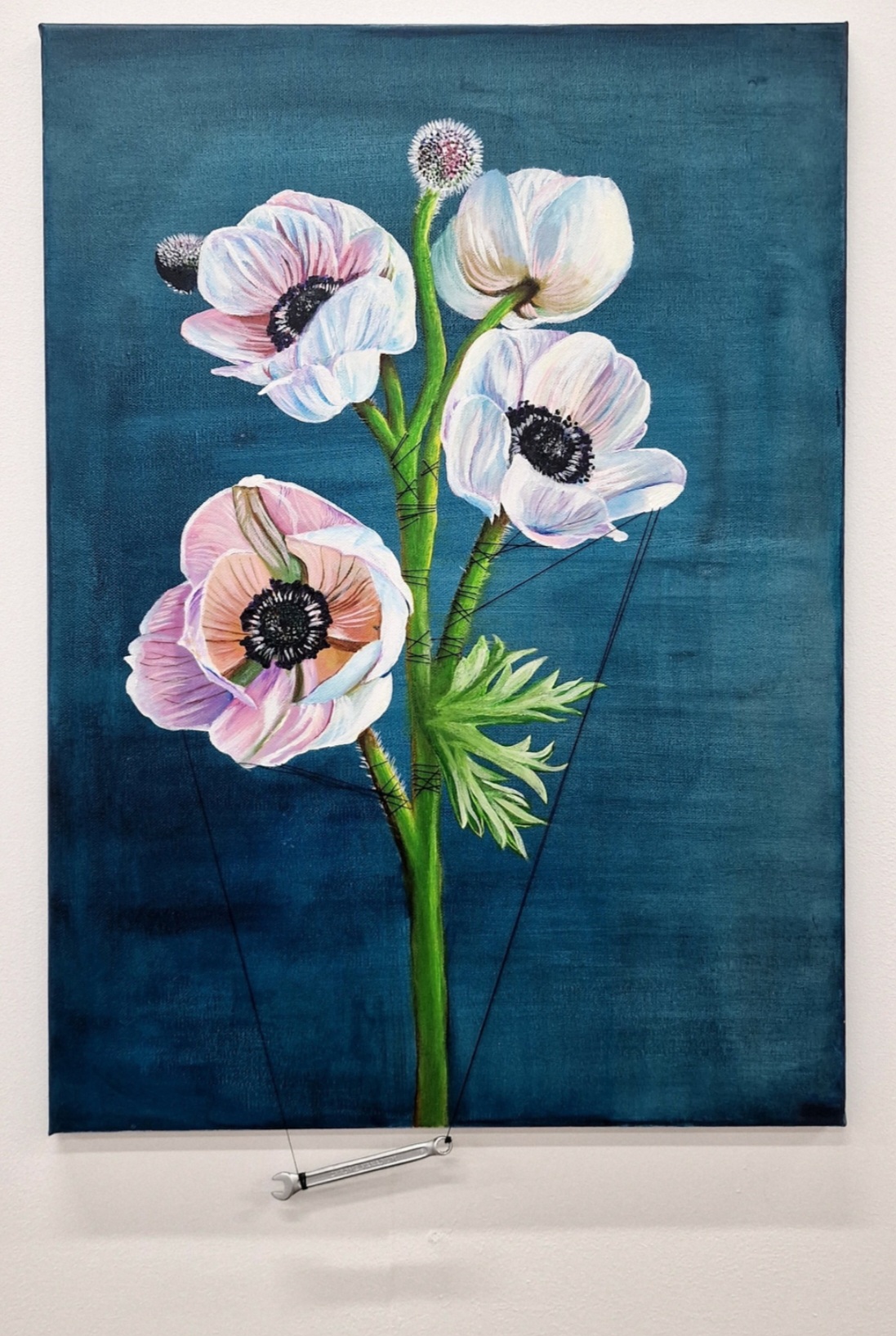
Much like the oral stories indicative of the Adinkra, Victoria Ashley’s work is live and therefore has three parts: the making, the erosion, and the imprint.
The making is a performative stage where she mixes the clay, forms the symbols, and tidies errant clay. This process is filmed and takes approximately two hours. When the symbols are formed and the clay is wet, the next stage begins. This takes over twenty-four hours to complete, where the clay gradually falls off the canvas unto the black fabric beneath. Stop motion is used to capture this process. As the clay falls off, the symbols are obscured until all the clay falls off and just an imprint is left behind where her fingers left a faint mark as she originally formed the symbols. This is the final stage, and the remnants of the clay can be observed on the ground with gold flakes revealed upon closer inspection.
When Adinkra symbols are in groups, they form Adinkra poetry which are interpreted by the viewer subjectively. In this form, they tell the story of the one wearing the cloth printed with the motifs or the resident who has plastered them on his walls. The symbols Ashley has chosen to use from top to bottom are: sɛpɔ (freedom), nea onnim (knowledge), Fawohodie (independence), dɛnkyɛm (adaptability), eppa (slavery), wawa aba (hardiness). While she has provided the basic meaning for each symbol, each one has very rich context, themes and tradition which makes this poetry deeply meaningful to her and declares her personal experiences.

